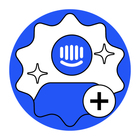Want to use conversation data attributes but you’re not sure how they can help stay organized and keep track of important information in your conversations?
We got you covered! 🤝 In this video, we’ll walk you through how to create and use them using real examples and use cases.
You’ll learn how to:
1. Set up conversation data attributes from scratch.
2. Apply them inside a conversation manually.
3. Automate their use with Macros, Basics, and Workflows to capture key data points from customers upfront and route conversations based on your criteria.
5. Organize these attributes with Views in your inbox.
6. Report on them to gain valuable insights.
If you found this helpful, let us know how you intend to use them to inspire us and others! 🚀







